Curriculum Review: Michael Clay Thompson’s Language Arts
Rebecca loves the nerdy grammar fun of Michael Clay Thompson’s Language Arts. It may not be for everyone, but it’s definitely for word lovers.
Michael Clay Thompson’s language arts curriculum is the sort of treat we homeschool moms and dads enjoy as much as our kids. In my experience, too few people know about this gem of a resource, and I’m excited to have the chance to share it here with you.
Thompson is no ordinary teacher, and this is not your run-of-the mill curriculum. Seeking to introduce students to English language arts in its highest forms, Thompson writes eloquently, with frequent literary references. My 11-year-old son has noticed, “This is like taking a class with a professor.”
Those looking for a secular classical resource to teach language arts will be especially appreciative of Thompson’s approach. Vocabulary lessons based on Latin and Greek stems are far more interesting than those normally found in traditional text books. Classical literature is referenced throughout the program so you’ll want to keep a pen and paper handy just to jot down all the reading suggestions. Thompson’s program might serve as launch pad that sparks your child’s interest in classical history as well.
Thompson endorses the Socratic method of teaching—asking probing questions that encourage students to unearth answers themselves. Throughout the teaching manuals, he provides tips for parents that encourage lively, organic discourse, and critical thinking skills.
For the purposes of this review, I looked at the complete set of texts for Level Two which is written for the 4th grade and up. In all, there are 4 levels:
Level 1 (for 3rd grade and up): Grammar Island, Practice Island, Building Language, The Music of the Hemispheres, Sentence Island
Level 2 (for 4th grade and up): Grammar Town, Practice Town, Caesar’s English I (or CEE 1), Building Poems, Paragraph Town
Level 3 (for 5th grade and up): Grammar Voyage, Practice Voyage, Caesar’s English II (or CEE 2), A World of Poetry, Essay Voyage
Level 4 (for 6th grade and up): Magic Lens 1, 4 Practice 1, The Word Within the Word 1, Poetry and Humanity, Advanced Academic Writing 1
Each level contains texts that can be ordered separately or, for a small savings, as a bundle. Those who purchase the full set will have a comprehensive language arts program that teaches grammar, vocabulary, writing, and poetry at an accelerated level. Thompson designed this curriculum with gifted students in mind; however, by adjusting the suggested grade levels, this program could be adapted for a wider range of motivated learners.
To better acclimate to this program’s unique style, some families might find it helpful to start at the beginning of the series. While each level could serve as a stand-alone program, the material is cumulative and diving into its middle may be difficult for learners accustomed to a more conventional curriculum.
Each student book has a separate accompanying teacher’s manual. Families wishing to save a few dollars could do so by purchasing only the teacher’s manual which includes the student text in its entirety. Much of the information for teachers appears in the back of the teaching manuals. Although text boxes for parents appear throughout the guides, they are small and unobtrusive; most students could still read the books without distraction or difficulty.
Formatting in each book is straightforward with lots of white space and stylized fonts. At first glance, the slim texts might appear to lack substance. However, upon closer inspection, most students will find the content on these pages to be generous, dense, and rich with detail. Photographs of art and important quotations are sprinkled throughout each text and form a significant portion of each lesson.
For those wishing to further enhance their child’s experience, an optional literature component can be purchased separately. Level Two takes a look at the novels Alice’s Adventures in Wonderland, Peter Pan, and The Wind in the Willows. Each book is reproduced to include an examination of poetic techniques, four-level analyses of interesting grammar, and a look at writing strategies. Vocabulary is reviewed at the end of each page. By working through these stories, concepts studied in Level Two’s textbooks can be reinforced in the context of compelling literature. The accompanying parent manual features commentary from Thompson about each novel, advanced vocabulary words, discussion questions, activities, and guidance to support students’ efforts practicing academic writing.
The Royal Fireworks Press website features free videos and sample readings from the books, along with other materials to support parents’ teaching efforts.
Pricing details vary depending on how items are purchased. The complete Level Two homeschool package, which does not include the literature trilogy mentioned above, is $260. If ordered on the publisher’s website, the cost is $225. The Alice, Peter, and Mole Trilogy Set and Parent Manual is an additional $40. For more pricing information, visit the Royal Fireworks Press website.
Not every student will enjoy this program. Some learners may consider the elevated, formal style of prose stuffy or pretentious and the level of detail too difficult. This is a curriculum for a family in love with language and all its complexity who wants to explore this subject in depth. If that sounds like you, this is a curriculum worth checking out. Enjoy!
We the People: A Community Model for Exploring the U.S. Constitution
“A Community Conversation to Understand the U.S. Constitution” was a profound and powerful experience for Carrie’s homeschool.
“A Community Conversation to Understand the U.S. Constitution” was a profound and powerful experience for Carrie’s homeschool.
One of the more rewarding learning experiences I’ve had with my 14-year-old son this year has been participating in We the People MN, a series of community teach-ins about the Constitution held at Solomon’s Porch, a Minneapolis gathering space housed in a former church. Run completely by volunteers, We the People MN bills itself as “A Community Conversation to Understand the U.S. Constitution.” I wanted to share a little about our family’s experience with the series in the hope of inspiring other programs like it across the country.
The idea for the series came from Cara Letofsky, a South Minneapolis resident who posted on her neighborhood Facebook group that the 2016 election made her want to learn more about the Constitution. About 60 people responded that they shared that desire to come together as a community to educate themselves politically. A small group of about ten volunteers followed up to plan the series, deciding what amendments they especially wanted to learn about and collaborating to identify community experts who might be willing to tackle leading a discussion of particular amendments. Working their community connections, they lined up a group of highly qualified presenters willing to volunteer their time, including a law professor from a local university, a Minneapolis city council member, attorneys, law students, and organizers from groups that are deeply involved in such contentious Constitutional issues as gun control laws, the right to vote, and reproductive rights.
The organizing committee decided on a format of 10 two-hour presentations, spaced out every two weeks from mid-January 2017 to late April 2017. The first program was a kick-off potluck (because everything always goes better with good food) and a public reading of the entire Constitution, with participants taking turns reading sections aloud at the mic. The organizers also distributed free pocket copies of the Constitution, donated by one of the organizers, Constitutional law professor Matt Filner. Finding free or cheap pocket Constitutions isn’t difficult, luckily. The National Center for Constitutional Studies, for instance, offers a bulk purchase of 100 pocket Constitutions for $40 on their website.
Cara Letofksy, the woman who’d sparked the idea, expected perhaps 20 people to show up to the first presentation. To her surprise, over 80 people attended that first event, and attendance has usually averaged between 100 to 150 participants at subsequent events.
In their initial planning discussions, the organizers knew they couldn’t cover the entire Constitution, so they decided to focus on Constitutional rights that might be most directly challenged under a Trump administration. Other communities might want to choose a different focus, such as looking at ways the Constitution directly impacts local issues and controversies.
The We the People MN series has covered such issues as the branches of government and separation of powers, as well as the First Amendment’s guarantees of freedom of expression and assembly and the Second Amendment’s guarantee of the right to bear arms (as well as the limitations implied by the wording of the amendment). One program was devoted to the right to privacy (and the limits on our privacy). Another event focused on the Fifth, Sixth, and Thirteenth Amendments and their relevance to criminal justice today. The series’ last presentation on the amendments will look at the right to vote guaranteed by the Fifteenth, Nineteenth, and Twenty-Fourth Amendments—and how that right to vote is being steadily eroded today. The series’ last gathering, planned for the 100th day of the Trump administration, will feature a community potluck and “next steps” discussion.
Each event has included a “TED”-style talk by an expert to set the stage for further discussion, followed by time for participants to talk in small groups and share their thoughts and bring up questions for the expert presenter. Almost every presentation has also included brief talks by local activists working in some way on problems raised by ongoing Constitutional debates. Often, these activists have given participants in the programs concrete ideas about how to get involved. For instance, at the event devoted to Second Amendment issues, a presenter from the group Protect Minnesota passed out factsheets about upcoming gun legislation and tips for creating effective talking points. The group highlighted that the most effective advocates usually find a way articulate their personal connections to proposed legislation.
Each presenter also typically sends out readings ahead of time through the We the People MN Facebook page for participants who want to take a deeper dive into topics, though the readings aren’t required to understand the presentations. The readings have ranged from excerpts from the Federalist Papers to summaries of key Supreme Court cases to up-to-the-minute news articles about contemporary Constitutional controversies.
For my son and me, attending these events has been a bonding, highly relevant way to study civics together. Throughout our week, we often find ourselves still talking about what we learned at the most recent We the People presentation. The series has given us new tools for understanding how the Constitution relates to our everyday lives and the lives of those around us.
I’ve also found the series personally helpful as I’ve stepped up my own game as a citizen this year. I’m calling my legislators and attending more public hearings, meetings, and protests than ever (and when I can, hauling my son along with me). Studying the Constitution in this way has given my son and me a clearer sense of what people fighting for change are up against and how we as citizens can make the best use of our time and people power.
Above all, I love that my son has seen people of all ages and backgrounds getting together every other Sunday afternoon to educate ourselves about our Constitution. To me, that’s been such a powerful example of lifelong learning and civic engagement, one I hope will stick with him the rest of his life. I think another crucial piece of the whole experience has been learning from people who are actively involved in the conversation about how to define our Constitutional rights and who are fighting to preserve those rights.
The volunteers who set up We the People MN are hoping to export the model elsewhere. They have plans to create a curriculum to help other people set up their own series, ones that will be relevant to their local communities. If you’d like to learn more, see videos of the presentations, and keep apprised of curriculum developments, you can visit the group’s public Facebook page.
Review: Building Foundations of Scientific Understanding
Do you want to teach your kids science, or do you want to teach them how to think like scientists? Rebecca Pickens has the scoop on an elementary to middle school program that lets you do both.
Do you want to teach your kids science, or do you want to teach them how to think like scientists? Rebecca Pickens has the scoop on an elementary to middle school program that lets you do both.
Writing home/school/life’s curriculum column is great fun. However, I have encountered one problem with the job. Just when I think I’ve got my own kids’ curriculum needs sorted out, I stumble upon a fantastic new resource like Dr. Bernard J. Nebel’s series, Building Foundations of Scientific Understanding (BFSU). Suddenly, all of my well-ironed plans are out the window, and I find myself trying something entirely new. Of course, this may well be more of a perk than a problem!
The three-volume BfSU series is a complete curriculum for students in kindergarten through eighth grade. Each volume is expected to take three years to complete. Volume I is for kindergarten to 2nd grade. Volume II targets grades 3 to 5. Volume III is for grades 6 to 8. For this review, I looked at Volume I.
Nebel opens Volume I of his series with the words of Carl Sagan: “Science is a way of thinking much more than it is a body of knowledge.” In a nutshell, this statement sums up Nebel’s approach to science education.
BFSU provides a comprehensive and integrated approach to the sciences. It relies mostly on teacher-led observation, questioning, and reasoning supplemented with hands-on activities. “Learning terminology,” Nebel explains, “is secondary to gaining conceptual understanding.”
A defining feature of Nebel’s program is this emphasis on integrative thinking. The first volume of BFSU explores four areas of science referred to in the text as learning progressions: Nature of Matter, Life Science, Physical Science, Engineering, and Technology, and Earth and Space Science. Rather than teaching each of these themes as compartmentalized units, Nebel promotes a tandem approach.
Students work on each learning progression for one or two lessons before moving on to the next. Well-organized flow charts, one for each learning progression, indicate the order in which lessons should be presented. Following this suggested sequence helps children see the interconnectedness of the scientific topics that they are exploring.
The way that one chooses to rotate through each flow chart is somewhat flexible. If your student is particularly interested in earth and space science and wants to linger there a while longer, she can. However, in order to glean the most from BFSU’s integrated approach, it is advisable not to stray too far from the suggested framework.
Each lesson plan is presented in an engaging, well-organized manner with the following included features:
An overview of concepts that will be addressed
An estimate of how much time is required to complete the core lesson
A list of key points students will understand upon their completion of the lesson
Background knowledge required in order to begin new material
Materials list
Teachable Moments — suggestions to help students fully engage with the material
Methods and procedures to help students interpret their own observations
Questions, discussions, and activity ideas that reinforce, expand, and assess learning
Notes to Parents and Others — a list of practical ideas adults can use to help kids relate classroom experiences to the real world
A list of books with grade-appropriate, supplemental readings
Throughout the book Nebel shares effective worthwhile teaching strategies. In a section titled “Teaching According to How Students Learn,” Nebel cites research examining teaching practices that both help and hinder students in their attempts to acquire scientific literacy.
The findings in this section are relevant not only to the field of science education, but also to learning in general. Nebel is an articulate spokesperson for finding the joy and intrinsic motivation in learning, and his message will resonate with many homeschooling families. In addition, Nebel moderates a website where BFSU users can communicate further about such ideas. Additional links to relevant photos, videos, and readings also appear on the site.
BFSU explores material that is far more advanced than that of other science programs for this age group. However, its engaging nature ensures that children with a range of abilities can successfully participate. Rather than a reliance on dry, text-heavy materials, BFSU helps students engage directly with the subject matter. BFSU inspires Socratic discussions that move children toward a deeper understanding of the subject matter. Students are encouraged to ask questions, to make connections, and discover concepts through activities and observations. In following this program, most children will develop a strong foundation that enables them to successfully pursue high school sciences.
BFSU will appeal to a wide range of learners; however, some considerations should also be taken into account. BFSU is a teacher’s guide. There is no accompanying children’s text. If your child is a visual learner, you will likely want to seek out pictures and other visual aids in order to support your lessons. The straightforward activities in this program are interesting, relevant, and not needlessly complicated. However, if you have a highly hands-on, kinesthetic learner, you may wish to supplement with additional experiments and activities that correlate with each lesson plan.
The full BFSU curriculum is intended to provide a comprehensive foundation in science for students K-8. As Nebel points out, significant gaps in science education are not unusual. To address this issue, even some families with older children may find it best to begin with the K-2 volume. The subject matter is advanced and well-developed, and a third or fourth grader is not likely to find the text’s format or content objectionable.
Primarily a teacher-led program, BFSU does require a deeper time commitment on the part of the parent than most other science programs for children this age. Parents should expect to spend time preparing for classes in advance and to be highly involved in each lesson with their child. At the same time, Nebel encourages instructors not to over prepare for lessons. Leave lots of room for spontaneous inquiry and observation—this is how scientists are grown.
The activities and experiments in this book rely on inexpensive, common materials, many of which homeschoolers will already have in their homes. As the author wisely points out, “Science does not come in a box. It is a matter of looking at and reflecting on the world around us.” Nebel has given the homeschooling community an engaging, secular science curriculum. And he has made this program highly affordable. Print versions of Volume 1 sell for just $24.95. And remember, this is a three-year curriculum. Kindle editions are $9.99 each, and ebook downloads are only $5 each. Books can be purchased online.
Now it’s time for me to go revise plans for my homeschoolers’ science program. fortunately, this is a plan I think I can stick with!
(We’re Amazon affiliates, so if you purchase something through an Amazon link, we may receive a small percentage of the sale. Obviously this doesn’t influence what we recommend, and we link to places other than Amazon.) This column was originally published in the fall 2016 issue of HSL.
Project-Based Learning for Middle School
Project-Based Learning: Creating Modern Education of Curiosity, Innovation, and Impact is a great resource for homeschool parents looking to make project-based learning part of their families’ learning lives.
Project-Based Learning: Creating Modern Education of Curiosity, Innovation, and Impact is a great resource for homeschool parents looking to make project-based learning part of their families’ learning lives.
I’ve been interested in project-based homeschooling since we started homeschooling, but to be totally honest, my kids and project-based learning have been a match made in … well, let’s just say The Bad Place. Our attempts at project-based learning were unorganized, unfocused, and usually ended in a big mess because someone lost interest or couldn’t figure out what to do next. I would look at other people’s awesome learning projects and wonder what they were doing that I wasn’t.
This has been frustrating because project-based learning feels like the right fit for us for middle school. We spent elementary school developing skills, and I know we’ll get more academic in high school if we continue to homeschool. Right now, though, we’re working hard to stretch ourselves to use our skills in all kinds of ways and to get better at creative problem-solving. I want my boys to figure things out for themselves, and I love the way project-based learning supports self-directed learning.
So I was happy but skeptical when I got the assignment to review a new book about project-based learning. Project-Based Learning: Creating Modern Education of Curiosity, Innovation, and Impact is a great resource for homeschool parents looking to make project-based learning part of their families’ learning lives.
The highlight of this book is the Project Planning Workbook in the back, which breaks down long- and short-term projects into specific steps. If you’re like me, and you love the idea of project-based learning but have not had good luck implementing it in your homeschool, you will really appreciate this step-by-step approach. I was able to take the one-day workbook plan for general research skills and help my boys adapt it into a plan for starting a lawn business in our neighborhood. Working through the specific questions gave them a meaningful framework for their project, and they were inspired to work through the list to complete the project — something that they’ve often struggled with in other projects, which they have tended to give up when the time comes to figure out what to do next.
I also really appreciated the section on finishing a project — especially the idea that a project doesn’t have to be complete to be finished. The authors offer some suggestions for reframing and redirecting stalled projects, but they also give parents permission to let a project that’s just not resonating any more go. I especially like the advice to wrap up a project instead of putting it on indefinite hiatus — you don’t have to complete the project, but you should finalize it with a wrap-up presentation and evaluation instead of just letting it moulder on the shelf. Because this has been a problem for us in project-based learning, going in knowing that quitting would be an official process and not a gradual fading away has been incredibly helpful in making project-based learning feel productive even when a project doesn’t work out.
I will say that the book is written by two authors and maybe because of that, the tone is a little flat. It is full of interesting information, but I would encourage you to skip ahead to the actual project-focused part of the book because the first part, which introduces project-based learning, is very repetitive and makes for dull reading. The problem may also be that the book is trying to be a general resource for all kinds of teachers, and because of that, it doesn’t specifically address the needs of each group. (For instance, a lot of the advice assumes that you’ll have several students working on a project, but for many homeschoolers, that won’t be the case — and there’s often not an alternative suggestion for solo homeschoolers.) I also wish there had been more specific advice for networking contacts and mentors because I think this can be particularly challenging for homeschoolers — at least for introverted homeschoolers like me. I also wish the editing had been a little more consistent. Overall, though, I recommend this as a useful resource for any parents who want to bring project-based learning to their homeschools but aren’t really sure where to start.
Sabrina Diaz is the assistant editor of HSL. This column originally appeared in the summer 2019 issue.
Blair Lee, one of the authors of this book, has a professional relationship with HSL and has written for the magazine. That relationship did not affect our choice to review her book or Sabrina’s opinions of it.
Amy’s 8th Grade Reading List
In our history cycle, 8th grade is all about Africa’s history and literature — plus some physics for fun.
In our history cycle, 8th grade is all about Africa’s history and literature — plus some physics for fun.
This reading list follows our very non-traditional history rotation, which means the focus is on African history and literature. For this year, I’d definitely assign a history or science research paper that would let kids practice putting all their research, critical thinking, and writing skills together in one big project, and we’d be working a lot on taking notes and test-driving systems to manage long deadlines effectively. If I could, I’d plan a field trip to the Smithsonian’s National Museum of African Art. (I’d also work in this little lesson on Ghana’s children’s music from Folkways.)
Summer Reading
I try to use summer reading to “bridge the gap” between the previous year and the upcoming one, so in this case, I’m looking for connections between U.S. history and Africa.
Tristan Strong Punches a Hole in the Sky
I mean, I love this book, so I would take any opportunity to recommend it, but it slides very beautifully into this gap: New Yorker Tristan discovers he’s a Storyteller with a connection to the very real world of African myth and folklore.
African History/African Literature
Spine: Africa Counts: Numbers and Patterns in African Cultures (This is a fascinating look at mathematical thinking among sub-Saharan people, and it gives you a cool context for critical reading.)
Africa Is Not a Country
This is a little outdated and skews a little young, but I think it makes a good starting point to start thinking about “Africa” the way we think about “Europe:” as one big, diverse group of countries that get lumped together because of their similarities but that are definitely not interchangeable.
Seven Natural Wonders of Africa
This is a fun way to bring a little geography in.
Early Art and Architecture of Africa
I feel like you need one coffee table art book if you’re combining literature and history for humanities — and I like that this one includes architecture and focuses on seven specific regions.
Dinosaurs, Diamonds, and Democracy: A Short, Short History of South Africa
This isn’t a perfect book, but it’s a nice condensed look at the history of South Africa from prehistory to post-apartheid. I find it handy for setting the scale of African studies.
Akata Witch
This is way more than the Nigerian Harry Potter, but come on, didn’t I have you at “Nigerian Harry Potter?” Sunny returns home from the United States to Aba, Nigeria, where she discovers that she is one of the magical Leopard People.
A Long Walk to Water
I tried to avoid “sad books” for this unit because I don’t want my kids to associate African literature with sadness — there’s a lot of fun, funny African writing! But I did add this one to the list because I think the intersecting stories of two Sudanese children from different time periods manages to be both important and hopeful.
Zahrah the Windseeker
Speculative fiction from a uniquely African perspective — I really enjoyed this one.
The Royal Kingdoms of Ghana, Mali, and Songhay: Life in Medieval Africa
I don’t know about you, but I never learned about medieval Africa in school — and it’s so interesting! Usually we start where this book ends, with the introduction of the slave trade, but this book digs into the history of three of West Africa’s significant and sophisticated kingdoms.
Nzingha: Warrior Queen of Matamba, Angola, Africa, 1595
This book isn’t perfect, but I like it because it’s based on a real woman, the leader of the Mbundu people of Angola in the late 1500s and because it tackles a real historical problem: Nzingha fights to keep the Portuguese out of Africa because she believes their kind of slavery is wrong. This is a great conversation starter for talking about how European slavery in the 16th century became racist in a way that made it different from other forms of slavery.
King Shaka: Zulu Legend
Shaka may be southern Africa’s most famous 19th century ruler, and this graphic novel tells the story of how he consolidated his power, partly through an alliance with white colonists near the Port of Natal. There is a lot of complicated stuff happening with Shaka and his brother and the Zulu people, so it might be a good idea to read an overview of the actual history before you dive into this one.
Sundiata: Lion King of Mali
Think of this as the Iliad or Gilgamesh for 13th century Mali — the full text might be a bit much for a middle schooler to tackle, but this picture book is an excellent introduction.
Indaba My Children
This collection tells the story of life for the Bantu people (of west and central Africa) from the time of the Phoenicians to the present, so it’s a great mix of literature, history, and philosophy.
In Our Village: Kambi ya Simba Through the Eyes of Its Youth
I love that this book of photos and essays was actually created by kids in a Tanzanian village.
Once Upon a Time in Ghana
I kind of love how this book is both a collection of traditional Ewe stories and a study of cultural storytelling. (I’d save this one until about mid-year, when you feel like you have an understanding of a few different African cultures to ground your reading.)
Talking Drums
This is a nice collection of traditional and modern African poetry from several different countries.
Abina and the Important Men: A Graphic History
Did you know that in 1876, an enslaved West African woman took her “owner” to court after she escaped into free territory? I sure didn’t! This graphic novel is an interesting look at Africa’s Gold Coast at the height of 19th century imperialism.
It's Trevor Noah: Born a Crime: Stories from a South African Childhood
Comedian Trevor Noah tells the story of growing up in South Africa as the child of white European dad and a Black South African mom — an illegal union that made him an illegal kid in the racist apartheid government of the time. Noah is often hilarious, which makes this book’s tough subject go down a little easier. (You could definitely sub the adult version of this book — it just has more swearing and more details about Noah’s time in jail.)
The Boy Who Harnessed the Wind
This true story about a Malawi boy who built a windmill for his village is both a great look at modern life in one section of Africa and an inspiring story about ingenuity and determination. (Read this when you’re studying electricity in physics!)
So Long a Letter
Abandoned wife Ramatoulaye expresses her frustration at Senegal's sexist legal system in a long letter to her friend in this book, which was written during the very early days of Senegal's feminist movement.
Cry, the Beloved Country
This is probably the most challenging book on the list, but if you’ve got a confident reader, it’s an amazing read. Feel free to save it for another year if it seems like too much right now — it’s worth waiting for.
Physics
Spine: Junk Drawer Physics: 50 Awesome Experiments That Don’t Cost a Thing
Spine: Newton at the Center (with the Student Quest Guide)
Thing Explainer
This is such a funny book that uses the simplest words possible to explain complicated things — for instance, helium becomes “funny voice air.”
The Way Things Work Now
A classic!
Basher Science: Physics
My kids love these cartoon-y, information-packed subject introductions.
Fatal Forces
This Horrible Science book makes gravity and the other forces of nature irresistibly interesting.
The Manga Guide to Electricity
You’ll learn lots abut how electricity works in this entertaining story of an average high school student from the land of electricity who has to make up her flunked electricity exam with summer school on Earth.
The Age of Miracles
A fictional take on a big science question: What would happen if the laws of physics on our planet changed?
Death by Black Hole: And Other Cosmic Quandaries
This essay collection by Neil deGrasse Tyson breaks down lots of complicated astrophysics ideas into totally understandable bites. For me, this is the fun part of physics, so I like to spend a lot of time with it.
(We’re Amazon affiliates, so if you purchase something through an Amazon link, we may receive a small percentage of the sale. Obviously this doesn’t influence what we recommend, and we link to places other than Amazon.)
How to Win at Online Classes
Online classes can be a big boom for homeschoolers — but they can be a real bust, too. Here’s what you need to know to find the classes that are best for your homeschool.
Online classes can be a big boom for homeschoolers — but they can be a real bust, too. Here’s what you need to know to find the classes that are best for your homeschool.
It's no surprise that online class attendance continues to grow — an upward trajectory that Babson Survey Research Group says started 14 years ago — but as more class options become available and the software for these classes becomes more affordable, it can be hard to tell the good ones from the not-so-great.
“We’ve taken online classes, and the experience has been all over the place,” says Faith*, who homeschool her 13-year-old and 16-year-old sons. “We have had amazing teachers whose classes were challenging and en- gaging, and we’ve had classes where teachers were clearly phoning it in or where the technology problems kept getting in the way of class time.”
Faith has found there’s a similarly wide range of possibilities when it comes to teacher feedback, course rigor, and course expectations — and it’s not always clear just skim- ming a class description whether the class will be a good fit. Here are some strategies to help find a class that’s likely to give you what you want.
Look for real-time interaction with teachers and students.
Whether classes are live or recorded in advance, good classes include instructor-to-student and peer-to-peer discussion sessions as part of the class.
Consider the teacher’s background.
Homeschoolers know better than anyone that non-degreed teachers can be as passionate and engaged in a topic as PhDs, so lack of a degree shouldn’t weed a teacher out — but the best online classes vet teachers for experience and expertise. You may find some treasures in online classes that allow anyone to sign up to teach, but you are likely to run into more unsatisfying classes, too.
Look at what feedback a class offers.
A writing class, for instance, that doesn’t offer substantial, written feedback on assignments is less likely to be a good experience than one that does. Online classes should specify what kind of feedback is included in the class. This can be especially important for high school classes, where you may be looking for outside academic confirmation of student’s abilities and quality of work.
Consider the student requirements.
Some classes are fun, dip-you-toes-in introductions and others are more rigorous. Know what you want so that you can make the right choice for your student — and the other kids in the class. Nothing is more frustrating than being the only student in a class who is doing the reading every week.
Be respectful of teacher recommendations.
If there are minimum requirements for a class, don’t sign up a kid who hasn’t covered those bases, even if he’s passionate about the subject. Some classes are set up assuming students have a foundational knowledge base, and coming in without that can make the class frustrating for student and teacher. (If you think your child merits an exception, check with the instructor.)
Make sure you’re ready for the tech.
If a class needs you to have a microphone or to download a specific software, make sure you can make the tech specs work before you sign up.
Ask to “sit in” on a class.
It’s not always possible on the technology end, but the best way to tell whether a class is a good fit is to test it out.
*last name omitted for online publication
3 Alternative Spines for High School World History
World history is fascinating — so shouldn’t your high school history book be interesting, too?
World history is fascinating — so why aren’t world history textbooks?
World history is fascinating — so why aren’t world history textbooks? If you’re aiming to ace the AP World History exam or cover a specific range of history, you may find a textbook helps you get where you need to go, but if your prospects are wide open, so are your book options. These not-your-standard spines will inspire your world history studies in brave new directions.
How We Got to Now By Steven Johnson
In significant ways—some profound and some problematic — human history is the history of invention and innovation. In this book, Johnson traces the impact of six different scientific break- throughs over time: glass, cold, sound, clean, time, and light. Glass, for instance, began a part of fancy Egyptian jewelry and evolved to modern fiber optics; the evolution and increasing precision of train schedules is a fascinating look at how sophisticated our methods of time measurement have become.
A History of the World in 100 Objects By Neil MacGregor
From the earliest surviving object made by human hands — a chopping tool from Africa’s Olduvai gorge — to a solar-powered lamp and charger, MacGregor explores the world through the objects used by ordinary people. It’s these very people whose stories often get left out of history books, though — as MacGregor demonstrates—their experiences are often the ones with lasting impact on history.
A History of the World in 12 Maps By Jerry Brotton
Cartography historian Jerry Brotton considers how maps have shaped our understanding of the world around us, from ancient Greece to Google Earth. Perhaps nothing reveals more clearly how we see t he world than our attempts to trace its limits, and maps — part science, part subjectivity — reflect the imperial, religious, and economic agendas that shaped history.
(We’re Amazon affiliates, so if you purchase something through an Amazon link, we may receive a small percentage of the sale. Obviously this doesn’t influence what we recommend, and we link to places other than Amazon.)
3 Ways to Teach Art History
Art history is one of those extras that can wait indefinitely on your “as-soon-as-we-find-some-time” list. If you’re tired of waiting to dig into the world’s creative history, these curricula will help you make art history part of your regular routine now.
Art history is one of those extras that can wait indefinitely on your “as-soon-as-we-find-some-time” list. If you’re tired of waiting to dig into the world’s creative history, these curricula will help you make art history part of your regular routine now.
Art history is one of those extras that can wait indefinitely on your “as-soon-as-we-find-some-time” list. If you’re tired of waiting to dig into the world’s creative history, these curricula will help you make art history part of your regular routine now.
1. SHORT LESSONS IN ART HISTORY
Great for: Kids who like history but not necessarily making art
This is curriculum focuses on notable artists and schools of art from the Italian Renaissance through the mid-20th century, using biographies and major works as a jumping-off point for projects and discussions about art history. Though it’s recommended for middle through high school and does work well for those grades, it’s adaptable enough to use with younger kids or with a group of different ages.
2. KHAN ACADEMY: ART HISTORY
Great for: Visual learners who want to see lots of pictures
The standout feature of Khan Academy’s free online art history program is the sheer breadth of images it contains — while books are limited by their page space, Khan Academy is able to collect hundreds of pieces of art for each period it covers. (In fact, some of the recommended viewing list for AP Art History is only available through Khan Academy.) You could certainly use this with younger students, but it works best as a self-contained, self-directed study for students in middle school or older.
3. DISCOVERING GREAT ARTISTS FOR KIDS
Great for: Project-based learners who want activities and a focused approach
If you want to get your hands dirty with art projects, this is the program for you: For each of the featured artists, there’s an art project that mimics that artist’s style. (For instance, you’ll make a stained glass pattern when you study Louis Comfort Tiffany and a dot print when you explore Roy Lichtenstein’s work.) After a short artist biography and a little historical context, you’ll dive right into hands-on projects that let you try techniques and styles for yourself. Activities range from preschool-friendly to much more complex, but most are adaptable to work with students of any age.
(We’re Amazon affiliates, so if you purchase something through an Amazon link, we may receive a small percentage of the sale. Obviously this doesn’t influence what we recommend, and we link to places other than Amazon.)
How a Four-Year History Rotation Looks for Us
I love that four-year history rotation — but I also love learning about people who aren’t rich white men. Here’s a year-by-year guide to how we cover history, literature, and science in our homeschool.
I love that four-year history rotation — but I also love learning about people who aren’t rich white men. Here’s a year-by-year guide to how we cover history, literature, and science in our homeschool, following a more inclusive history cycle.
One thing that I think has anchored our homeschool life is the four-year history rotation — and since history is the center of our homeschool, this ends up being the academic spine of what we do. I like this system because it gives us structure without a rigid to-do list — it’s a spine, but it can bend in all kinds of fun directions. I am not a traditionalist in terms of the things we cover — partly because the very classical model tends to leave out big chunks of the non-European world and partly because I want to focus on the stuff I enjoy and skip the stuff I don’t, which is totally personal opinion. The very classical model builds around four years: ancient history, middle ages to the Renaissance, reformation and colonization, and the “modern world” (which I put in quotation marks because it usually starts with the Victorians and doesn’t always get very much past WWII). That’s a fine plan if you like it, but we have switched it up so that we do the ancient world, European history, U.S. history, and Asian/African history, focusing on different periods as we revisit each era. So our homeschool plan ends up looking kind of like this:
Kindergarten
(I treat kindergarten like pre-1st grade, so we actually do the ancients twice in a row in K and 1st)
Literature: Origin myths from around the world
Science: The Big Bang and the origins of our solar system
1st grade
History: Ancient Egypt
Literature: World mythology
Science: Backyard astronomy
2nd grade
History: Medieval Europe
Literature: Medieval legends, historical fiction about the middle ages
Science: Weather cycles
3rd grade
History: Native American history
Literature: Native American myths and literature
Science: Scientific problem solving
4th grade
History: Chinese history
Literature: Chinese myths, literature, and historical fiction about China
Science: The laws of motion
5th grade
History: The Roman Empire
Literature: Julius Caesar, Roman myths, historical fiction about ancient Rome
Science: Astronomy
6th grade
History: World War I and World War II
Literature: Historical fiction and contemporary books set during World War I and World War II
Science: Biology
7th grade
History: The American Revolution and the Civil War
Literature: Historical fiction and contemporary books set during the Revolution and the Civil War
Science: Chemistry
8th grade
History: African history
Literature: African fiction
Science: Physics
Here’s the 8th grade reading list.
9th grade
History: Ancient Greece and Rome
Literature: Greek and Roman literature
Science: Astronomy
10th grade
History: The Enlightenment / The Victorians
Literature: Enlightenment literature / Victorian literature
Science: Biology
11th grade
History: U.S. History (with an emphasis on women, people of color, immigrants, and LGBTQ+ people’s lives)
Literature: American literature
Science: Chemistry
12th grade
History: Asian history
Literature: Asian literature
Science: Physics
Obviously other stuff happens in our homeschool! We do a lot of readalouds of newer books, and we often do separate classes around stuff we’re interested in (like dragons or Studio Ghibli adaptations or dystopian futures). We start Latin in 3rd grade and continue through 8th grade — then the kids choose what language they want to do for high school. We do math and critical thinking every year, and we do always include philosophy in our literature and history. Nature study is one of the things that we try to do every day, along with a little handwork of some kind. (Knitting and crocheting are the most popular now, but we’ve tried everything from soap carving to creative mending.) And the high school and middle school years are kind of interchangeable — my daughter didn’t start homeschooling until 2nd grade, so our cycles were off and we did U.S. history in 9th grade with no problems. But the history/literature/science cycle is the core of our homeschool, and it’s worked really well for us. (If there’s interest, some day I might do a full reading list for each year, so let me know if that’s something you would be interested in.)
Curriculum Review: The Critical Thinking Company's Vocabulary Virtuoso
Shelli reviews a vocabulary program that’s designed to help middle and high school students boost their vocabulary — by going beyond memorizing word lists and mastering the nuances of adding new language to their repertoire. (Plus, we’ve got a special coupon code for you!)
If you are looking for an easy-to-use workbook to help expand your student’s vocabulary, look no further than Vocabulary Virtuoso by The Critical Thinking Co. For the purpose of this post, I’m reviewing the PSAT-SAT Book 2, which according to the Critical Thinking Co. is appropriate for grades 8-12. (They offer workbooks for younger levels as well.)
To be honest, I didn’t plan to do formal vocabulary work with my son. He reads a great deal, and I know he already possesses a high vocabulary. But now that I’ve seen Vocabulary Virtuoso, I’m going to have him begin the book next year as he starts the 7th grade. Even though the workbook is geared towards 8-12th graders, he’s a strong reader, so I don’t think it will be difficult for him to work through it. I think it will help him prepare for the standardized tests that are required for homeschoolers in our state.
In fact, he’s already looked at it and volunteered to start using it now. How cool is that? When he was younger, he hated doing worksheets, so I never made him do them. Now, he’s much more willing to do them, and he even seems to like them! A book like this is much easier for me because he can work through it on his own without me looking over his shoulder.
Vocabulary Virtuosos PSAT-SAT Book 2 is 187 pages long, and it contains twenty lessons. Each lesson begins with a list of vocabulary words that may be used on the PSAT and/or SAT exams. The list contains the word, pronunciation key, definition and a sample sentence using that word.
Following the vocabulary list is six worksheets or exercises that require students to think critically and use words in different ways. For example, they will see synonyms for the word, fill in the blanks with the appropriate word, read a story that uses each word, etc. Another exercise requires them to unscramble the letters in the word, which will help them learn how to spell it correctly. They will also need to complete a sentence that shows they understand the definition of a word. I believe that going through each of these exercises slowly will help a student remember the words and their meaning.
I also like that through the exercises and stories, students who complete this workbook will also learn a little about ancient Greek history, ancient Greek drama, Shakespeare’s London, Renaissance artists, epistolary writing, U.S. musical history, types of literary conflict and many other interesting topics.
The Critical Thinking Co. is a great company with many products worth looking at. Each one incorporates critical thinking, so they aren’t your run-of-the-mill workbooks. I’ve only just started looking through their catalog and determining what we can use in the future.
They have an awesome free critical thinking puzzle of the week you can get by signing up here.
Our High School Curriculum: Year Two Is Available to Pre-Order Now (And Year One Is Back in Stock!)
Get the scoop on year two of our complete high school curriculum!
And if you pre-order it, you can save about 20%: Through August, the print cost for Year Two is $775 (regularly $995) and the digital cost for Year Two is $350 (regularly $450). You don’t need a coupon — the discount will be automatically applied.
And I think it’s even better than Year One, thanks in no small part to the fabulous team of students who test-drove Year One this past year. I have loved hearing from folks every week about how things are going, nerding out about books together, and getting to read some of their awesome work. It has been a real pleasure! And as a bonus, they’ve given me tons of feedback about how the curriculum plays out in a real-life homeschool, so I’ve been able to make some tweaks to make Year Two even better.
One of the tweaks is maybe more of a big change than a little tweak: As you can see from the lovely picture above, for Year Two I’ve written several books to go along with the Year Two curriculum. I struggled to find the right spines for classes like history and science — so, in classic homeschooler fashion, I ended up writing them myself. I’ve also edited separate readers for literature, philosophy, and government (in Year One, readings are included in the lesson guides) so that you can more comfortably read them in bed or the hammock.
Another tweak is that we’ve upgraded from audio to video lectures for Year Two. One of the nicest pieces of feedback I got from the folks who used Year One was that they loved the lectures that came with each class, so I’ve been making videos for Year Two. (Don’t worry, you hardly have to look at me at all! But I still make random Buffy references and default to feminine pronouns.) I think for things like Latin and chemistry, you’ll really love the visual component — but you can download just the audio if you prefer your lectures podcast-style.
Just like last year, you can choose between the print edition and a digital edition. The curriculum ships in August, and both curricula will be on sale until shipments start.
So what’s actually in our Year Two curriculum? I’m so glad you asked! Year Two is our U.S. history year, which means we’re focusing on the United States — history, literature, and government.
What’s included:
This 28-week curriculum contains everything but math.
Philosophy
After a year of grounding ourselves in critical thinking, we’re ready to tackle some real philosophy! We’ll start easy with Transcendentalism, arguably the most American philosophy and one that’s very accessible. In the second half of the year, we’ll turn to ethics, considering Aristotle, Kant, Mill, and care ethics.
Philosophy primary source reader (edited by HSL)
Philosophy student guide (with weekly lessons and assignments)
Philosophy lectures channel (this year with video!)
U.S. History
I feel like by high school most of us know the basics of U.S. history, so I’ve chosen to focus on the lives that often get left out of history books: immigrants, women, people of color, LGBTQ people. I’ve tried to tell the story of the United States through their stories, and I hope I’ve done them justice. And, of course, we continue to emphasize primary sources.
The Colorful, Queer, Feminist, Immigrant Lives That Helped Shape the United States by Amy Sharony
History student guide (with weekly lessons, assignments, and primary source readings — see a sample)
History lectures channel (this year with video!)
Literature and Composition
We’ll explore “American literature” through a series of focused studies, including American Gothic literature, The Awakening, the Harlem Renaissance, American poetry, and We Have Always Lived in the Castle. We’ll be writing a mix of critical and personal essays about literature.
Literature reader (edited by HSL)
Literature student guide (with weekly lessons, assignments, and critical considerations — see a sample)
Composition student guide (with assignments and rubrics)
Literature lectures channel (this year with video!)
Chemistry
Our textbook-based biology last year was fine, but I think we can do better. Chemistry is fascinating, full of compelling people and wacky elements (there’s a Poisoner’s Corridor in the periodic table!), and there wasn’t really a book that managed to cover the basics of chemistry while also giving plenty of room to the stories that make it interesting. I hope this book fills the gap — I certainly had a great time writing it and working with a couple of super-smart chemists on balancing information and fun and making sure we had really good labs.
Chemistry for People Who Would Rather Be Reading by Amy Sharony
Chemistry Lab Manual
Chemistry student guide (with weekly lessons and assignments — see a sample)
Chemistry lessons channel (this year with video!)
U.S. Government and Politics
It only makes sense to cover U.S. government and politics during our U.S. history year. We’ll spend about half this class taking a close look at the Constitution, including elections and the branches of government, and the other half exploring some of the most significant U.S. Supreme Court cases.
The Annotated Constitution of the United States (edited by HSL)
Major Supreme Court Cases (edited by HSL)
U.S. Government and Politics student guide (with weekly lessons, assignments, and primary source readings)
Government lectures channel (this year with video!)
Latin IB
We’ll continue with Ecce Romani, learning more vocabulary and more complex grammar. I’ve also added more individual grammar lessons with videos because I hear you: You want more grammar!
Latin student guide (with weekly lessons and assignments — see a sample)
Latin lessons channel (this year with video!)
Student Guide
The student guide is part inspirational manual, part goal-setting tool, and part weekly planner. (See a sample.)
Contracts, annual goals, and semester goals
Grade matrix options and tracking for each subject
Annual, monthly, and weekly schedule suggestions
Parents Guide
Midterm and final exams with answer keys
Suggestions for counting units and course descriptions
Online Support
I am available online for a live chat every week in our curriculum Facebook group to answer questions and offer whatever other support you need.
You will need: (This is the stuff you’ll need that is NOT included in the curriculum.)
The Awakening
We Have Always Lived in the Castle
Ecce Romani 1 and 2 (if you don’t already have it from last year)
Supplies for chemistry labs (listed in lab manual)
whatever you’re doing for math
Questions You Might Have
If I don’t tackle your question here, please feel free to ask!
What if we want to jump right into Year Two without doing Year One?
You can, of course — I am not the boss of you! The challenge you might run into is that some of the critical reading and writing you’ll be doing in Year Two builds on skills you learned in Year One, like annotating as you read, self-editing your essays, using the toolkit, etc. You could certainly learn these things as you go, but you’ll miss out on the structured development of these skills.
Can I buy Year One?
Yes! It’s on sale again now, too. (It will ship in August, too, so I can do all my box-packing / emailing in one big push.)
Can I buy just one piece of the curriculum?
Not yet — sorry! It is a goal for down the road, but right now, it makes sense for us to keep the curriculum as a bundle. (I am teaching a couple of online classes this fall at the Academy based on this curriculum, including history and literature, so keep an eye out for those if you’re looking for just one class.)
How does this translate to credits on our transcript?
As a general guide, I recommend:
1.0 History
1.0 Literature: Main Literature (0.75) + Composition (0.25)
1.0 Latin
1.0 Philosophy
1.5 Chemistry (with Lab)
0.5 U.S. Government and Politics
But I’m happy to chat specifics with you if you run into questions!
How much parent support is required?
The curriculum is written for the student, so it’s designed for students to work through on their own. I’ve included step-by-step strategies for close reading, critical thinking, making connections, and analyzing information as well as tools for self-evaluation with the idea that students will get better at these things over the course of the year — there’s a lot of skill-building integrated into the program. You know best what your student needs, but an on-level high school student should be able to use this curriculum largely independently.
How do I grade this?
For each subject, I’ve included a grade matrix, which students can use to plot their own version of academic success. Each grade matrix includes a recommended number of points to indicate a level of academic success: students can opt to pass the class, work to earn an A, or aspire to an honors-level A based on their own goals for that particular subject. The grade matrix includes a broad range of output activities, from taking notes and completing annotated readings to writing papers and projects with lots of different options in each category. Aside from a few required items, students can combine projects and activities to create their own assessment framework. Output options include midterm and final exams for each subject.
What do the rest of the years look like?
We’re building this curriculum as we go, so some of the specifics might change as our weekly plans actually start to come together. But the broad outline for the next three years is set as follows and will remain the same, even if specific readings change:
Year Three: Asian and African History includes:
Humanities: History, literature, and philosophy of China, Japan, India, and non-Egypt Africa
Composition: Synthesis essays (explanatory and argumentative); creative writing
Philosophy: Confucius/Daoism/Chuang-Tzu
Science: Physics (with Labs), includes history-related primary source readings
Latin 2
Year Four: The Classical World includes:
Humanities: History, literature, and philosophy of ancient Greece and Rome
Composition: Scientific writing; persuasive essays
Philosophy: Plato/Lucretius
Science: Astronomy (with Labs), includes history-related primary source readings
Latin 3
Supplements: World Religions; The Epic of Gilgamesh
Other things you might want to note:
This curriculum was designed to cover two 14-week semesters, for a total of 28 weeks of structured academic time. Because of the short time span, it’s a very focused, rigorous curriculum — you could definitely slow down and spread it across more time if you wanted to.
This is a reading- and writing-intensive curriculum. While you could definitely modify it to make it less so, critical reading and writing are such essential parts of it that if you hate those things, this curriculum might not be the best fit for you.
All of the information in this curriculum was reviewed by and created by or in close collaboration with people with advanced degrees in the subject area.
This is a secular curriculum.
This sample does not include complete lessons and is only a sample — the completed curriculum may differ from what you see here.
Curriculum Review: Better Chinese
Shelli reviews a beginner’s Chinese curriculum that’s working well for her 6th and 3rd grader.
Maybe I’m crazy, but I’ve undertaken the task of teaching my boys and myself two foreign languages when I don’t speak any foreign language. I’m teaching them Chinese and Spanish.
I think the biggest challenge in teaching a foreign language is finding the time to do it on top of all our other lessons and commitments. The second challenge is finding a good curriculum. I have learned that when it comes to foreign language, I cannot wing it. I need all the help I can get, especially since I’m doing two languages.
As for our Spanish curriculum, you can learn how I searched for and found a great Spanish curriculum in the Winter 2018 issue of home/school/life magazine. As for Chinese, I couldn’t find many non-digital curriculums for homeschoolers. I did find online programs, videos, apps, workbooks and resources geared toward adults on Amazon.com, but as for a step-by-step program of how to teach children Chinese when you don’t speak it yourself, I found only one: Better Chinese. This program teaches the simplified version of Mandarin Chinese.
(If you know of another program I missed, please tell me about it in the comments section!)
For the record, I have nothing against online language programs or apps, and I think having a component of the curriculum online is helpful, but I haven’t found it useful to do all the work online when I sit down with my two boys. We need a variety of activities – games, flashcards, worksheets to practice writing, etc. I find it too difficult to learn a language by just listening and viewing a screen. We also need a lot of repetition, so I needed a program that would offer a variety of ways to go over vocabulary.
I started by purchasing My First Chinese Reader Starter Kit (about $60 on sale). This includes one textbook (volume 1), two workbooks (volume 1A and 1B), a 6-month subscription to their online lessons, and a 1-year subscription to their MP3 files for volumes 1-4. Later I felt I needed more help, so I purchased their Teacher’s Guide for volume 1 (about $41.00) and an additional set of Worksheets and Writing Exercise Sheets (about $81.00). (It’s a huge set of unbound worksheets, but I do feel this was too expensive for what is essentially a big workbook.)
I have found Better Chinese to be a good curriculum, but it’s far from perfect. I have had to be creative to get it to work for us, and I believe it’s because I was already teaching from a Spanish curriculum that I have been able to figure out how to study Chinese with the boys.
For what it’s worth, here are my pros and cons regarding Better Chinese:
Pros: I like the Volume 1 textbook and how it’s set up. Each lesson gives us enough Chinese to learn without overwhelming us, and each lesson builds on the one before it. I like that we can watch animated versions of the lessons online to hear how the Chinese is spoken, and we can keep listening and going over the lessons until we learn the characters, pinyin and English translations. (We spend a long time on each chapter.) Better Chinese offers more than one way to listen to the vocabulary, so I appreciate that too.
Cons: The textbook doesn’t come with any instructions on how to teach the material, which is why I purchased the Teacher’s Guide. This guide has been helpful and unhelpful. First of all, it’s written for classroom teachers. There’s a lot of information in it, but as a homeschool mom, I can use only part of it, if any. We won’t be able to do many of these games and activities until we get a little better at reading Chinese. (You can’t play a game, if you don’t have a clue what you’re looking at!) Instead of playing games or doing activities, I have found that good, old-fashioned sit-down time with pencil, paper and flashcards is what works best for us. But this brings me to another pro.
Pro: I like that Volume 1 Workbook A comes with perforated cards of each Chinese character we’re learning. (There’s no way I could create my own Chinese flashcards because I’m not good at writing the characters yet.) I also like the extra worksheets I purchased even though they were too expensive. These seem more effective right now than trying to play games in Chinese.
Another con: There is no answer key for any of the worksheets or workbooks. Granted, I can figure out most of the answers by simply checking the English translation in the textbook, but there are a few worksheets that ask you to respond to a question or write the correct word pattern. It would be helpful to have answer keys for these worksheets.
As with any endeavor, you have to start somewhere. Overall, I’m happy with this curriculum, and we’re learning Chinese, though very, very slowly. Better Chinese has given me some of the tools I needed to start teaching Chinese to the boys and myself, though I have some materials in this set that I may never use. As we go along, I’ll be able to discern better what other resources will be helpful to us.
Do you teach Chinese to your children? Please tell me about your experience.
Curriculum Review: The Science of Climate Change
Forget alternative facts and deal with actual science: Rebecca Pickens reviews The Science of Climate Change, a hands-on curriculum that tackles one of science’s most important issues.
Homeschooling offers our families wide open space to explore complex and topical issues like climate change. But finding science-based, kid-friendly materials to support these efforts can be surprisingly difficult. Blair Lee’s new curriculum, The Science of Climate Change: A Hands-On Course, has arrived on the scene just in time!
A former science professor with a background in environmental chemistry, Lee has gone on to pursue a career as a curriculum developer. You may know her as an author for the popular resource R.E.A.L. Science Odyssey or as the Smart Science columnist for HSL magazine.
In developing content for The Science of Climate Change, Lee has relied on her own scientific training as well as the research of reputable organizations which include:
National Oceanic and Atmospheric Administration (NOAA)
Earth Systems Laboratory (ESL)
National Aeronautics Space Administration (NASA)
Environmental Protection Agency (EPA)
National Renewable Energy Laboratory (NREL)
The Science of Climate Change is a concise 69 pages divided into four parts titled: The Greenhouse Effect; Global Warming; Climate Change; and What Can Be Done to Help? A useful glossary, answer key, and additional resources follow.
Lee’s writing is inviting and succinct. From the start, her admirable objective is clear: to make vital information concerning climate change accessible and relevant to a wide variety of learners.
Like many home educators, Lee believes scientific understanding is developed through “a careful pairing of information with an application of that information.” In order to achieve this balance, Lee has developed 16 hands-on activities to accompany her straightforward, science-based explanations of global warming. Preparation for these activities is minimal since many of the required materials can be found in most households.
Activities include making an empty box and predicting the number of air molecules inside of it. By making a Kool-Aid mixture that models the gas mixture found in air, kids learn about the significant effect a small concentration of greenhouse gas has on our planet. Another activity encourages students to gather and interpret data by tracking the temperature, amount of precipitation, and wind speed in one’s hometown every year for the past 30 years. Other activities include labs, graphing, and scientific modeling. Each activity is supported with helpful charts, tables, illustrations, and substantive data.
“Never in my lifetime has it felt more imperative to provide young people with substantive science and opportunities to develop the critical thinking skills required to make positive change.”
Lee does not sugarcoat the serious threats posed by climate change. At the same time, she provides her readers with a sense of hope and purpose by sharing pragmatic strategies we can all use to help minimize our carbon footprints. Making a case for practices that reduce, reuse, and recycle, Lee also encourages—and shows readers easy ways to—moderate energy consumption.
The Science of Climate Change was developed for a range of age levels. Though the information presented is most suited for children ages 8 to 15, it could easily be modified to accommodate older and younger learners. This curriculum will work well with multi-age siblings and is likely to inspire terrific mealtime discussions.
In an effort to ensure the book’s activities are accessible for a multitude of learners, lee sometimes presents two versions of the same projects. One such example is a graphing activity. Lee explains, “One set of graphs is a dot-to-dot activity for younger learners, where much of the graphing work has been done, and the real work is answering the questions at the end of the activity. There is also a version for older learners who use the information from a data table and to plot data points on the graphs.”
The Science of Climate Change is a secular program containing peer-reviewed, objective science. Even children who don’t yet consider themselves to be “good at” or engaged with science will be able to interact thoughtfully with the material presented here.
The PDF version is $20, and soft-cover copies are $30.
Many times throughout this year I’ve considered what an increasingly complex world my sons are living in. Never in my lifetime has it felt more imperative to provide young people with substantive science and opportunities to develop the critical thinking skills required to make positive change. As moms and dads everywhere put forth their best efforts to raise a new generation of responsible global citizens, they are fortunate to have resources such as Blair Lee’s new book to support them in their efforts.
Disclosure: Blair Lee is a sometimes columnist for HSL magazine. Her work for the magazine did not influence this review.
This was originally published in the summer 2017 issue of HSL.
Curriculum Review: Teach Your Child to Read in 100 Easy Lessons
People have strong feelings about this step-by-step reading program, but it worked great for Shelli's family.
People have strong feelings about this step-by-step reading program, but it worked great for Shelli's family.
Curriculum Review: Teach Your Child to Read in 100 Easy Lessons by Siegfried Engelmann
You will either love it or hate it. Teach Your Child to Read in 100 Easy Lessons (a.k.a. the Distar Method) is a popular book for homeschooling families. It’s easy in that it’s just one big book, you pick it up, go to the lesson you’re on, and start reading the script to your child. In other words, there’s no prep time, although parents should read the front matter in the book before beginning the lessons. It’ll make more sense, if you do, but don’t get overwhelmed either. (Keep reading, and I’ll explain why.)
I taught my eldest son how to read using this book, and now I’m teaching my younger son with it. I also use Starfall.com and games to help reinforce the blend sounds or sight words, etc., but for the most part, I’ve relied on 100 Easy Lessons.
I could be wrong, but I believe that a child will begin reading when he or she is ready to read. Some children are early readers and others begin reading later. I don’t think this has any bearing on intelligence. There is something about those connections in the brain that makes reading easy for a child to pick up on, or, if the connections haven’t happened yet, it’ll remain difficult — or impossible — until they do. Still, I have found it’s helpful to do short, light-hearted reading lessons, and I bet any reading curriculum (as long as you enjoy it) would do. Once my son was ready to read (at about 8.5 years old), it seemed to happen overnight. Everything I had taught him suddenly clicked.
I had two friends tell me that they tried 100 Easy Lessons, and they and their child hated it. Indeed, the “stories” are silly, and the pictures are too. This is why I say you’ll either love it or hate it. My boys both liked it. They thought the stories were fine, and they always looked forward to seeing the pictures, which I kept covered until they finished reading the story. (This is crucial.)
I recommend that parents read the front matter, and if you do, you may not like it because the instructions are rigid. For example, you’re supposed to follow the script exactly. I did that for a short time until I became comfortable with how the lessons worked. Then I was able to use my own words when doing the lessons. Now I don’t read the script or follow any of the instructions. In fact, I don’t have to say anything, if I don’t want to. My son knows the drill…. he reads all the sounds, words, and story (twice), and I help him, if he needs it. We don’t do the writing exercise because I have him work on handwriting separately.
I also don’t follow the rule that you have to do one lesson every day for one hundred days. This is silly, in my opinion. We do lessons about three times a week, and I find this is a good pace for a child who isn’t an eager reader. Also, for both my sons, I stopped using 100 Easy Lessons for a whole year somewhere between lessons 65 and 70. At this point, it gets harder. So, I waited a year, and then I started again at Lesson 50 and continued until the end of the book. (For my youngest, we’re currently doing that now.) This has worked very well for me because a child matures and is capable of so much more, if you just wait a year.
Some people worry about the Distar Method because it uses an altered orthography or symbols to help a child read the sounds in the book. It also introduces basic grammar slowly, such as that you capitalize the first letter of a sentence. None of this was a problem for my boys. They didn’t get dependent on these “helpers.” First of all, my boys see the written word in many different places. I read books to them! Secondly, by the end of 100 Easy Lessons, there has been so much repetition that they can easily recognize many of the high frequency words. Overall, I found those “helpers” to be, well, very helpful.
You can’t assume that your child will be reading fluently by the time they have finished 100 Easy Lessons. Like I said, my eldest son was 8.5 years old before he began reading fluently. We finished 100 Easy Lessons when he was seven. I followed up with having him read several of the recommended books (listed in the back of 100 Easy Lessons), and we simply continued a reading practice a few times a week, a few minutes at a time. Once everything “clicked,” I never had to do another reading lesson with him.
Teach Your Child to Read in 100 Easy Lessons worked for us. I think it could work well for many children, but like with any curriculum, you might have to tweak it for your kids’ unique needs. Don’t be afraid to do that. Ever.
Free Secular Science for Homeschool: Forensics Illustrated: Step Under the Tape
Kids who love crime shows will love the chance to dig into real forensic science and you can't beat the price on this free science program, but be aware that lab work requires a lot of specialized equipment and there are some careless errors you'll want to keep an eye out for.
Many of you have asked for a high school level science curriculum that is fun, challenging, and inexpensive. This complete curriculum is free. The only charges you will incur will depend on the lab supplies you purchase. If you are looking for something completely out of the box then this is the course for you and your teens.
THE FACTS
Developed and utilized by Brennon Sapp during his nine years teaching forensics to high school students, this complete curriculum in its entirety has been published on-line at www.bsapp.com free of charge. If you are so moved, he lists a PayPal address for donations.
The curriculum includes:
Student Text
Presentations
Photos and Sketches
Worksheets
Posters
Labs
Tests
Answer Keys
Additional Web Resources
The curriculum begins with a short introduction of the origins of forensic science and quickly moves to the collection of various types of evidence and the manners by which they are processed. It is important to note up front that the curriculum includes some information of a more graphic nature-- in-depth discussions of drug use/paraphernalia and autopsies, for example-- and may not be suitable for younger students.
OUR EXPERIENCE
I decided to teach forensic science in order to tie together the information gathered in our previous science studies. I wanted to show my son how biology, chemistry, physics, geology, and astronomy all came together in a real life application. To that end, I found Forensics Illustrated fit the bill perfectly. I was able to gloss over or skip altogether the information that I considered too graphic for his age. I loved the worksheets and the review sheets that are provided for each chapter, and the tests were certainly challenging.
We were not able to use the majority of the labs because unless you have access to a complete science lab, it’s just not realistic. Now, I know this is going to sound nitpicky, but when I use a curriculum, I expect the spelling and grammar to be perfect and that was not always the case with this curriculum. I also found that the answers to test questions did not always properly correlate to the text; this is particularly evident in chapters eight and nine. It was not difficult to make these few changes myself, and when a curriculum this complete is free, who am I to complain? Although there were obstacles to overcome with this curriculum, both my son and I enjoyed it a great deal. It really was a perfect way to tie together all of our previous science classes and jump-start the high school science experience.
ADAPTING THE CURRICULUM TO MEET SPECIFIC NEEDS
This curriculum does not allow for a great deal if wiggle room. It cannot be used without a great deal of alteration for kids below the eighth grade as the subject matter is mature and sometimes graphic. As a homeschooler, I found that I needed to make sweeping changes to the lab work. Obviously, I do not have access to the plethora of materials available in a high school lab. This made conducting some of the experiments impossible. It is also evident by the content that Mr. Sapp used slides to supplement this course that are not available on the website. I got creative and found my own solution to the lab problem. Home Science Tools is a phenomenal company that specializes in providing homeschoolers with science supplies. I was able to find a crime scene science kit and a blood typing kit at a very reasonable price. This meant I was able to tie in my own experiments to the chapters in the text. To deal with the lack of slides, I simply eliminated those questions from the tests and inserted photos from the text for identification.
Content Rating: 5/5
Adaptability Rating: 2/5
Ease of Use Rating: 4/5



















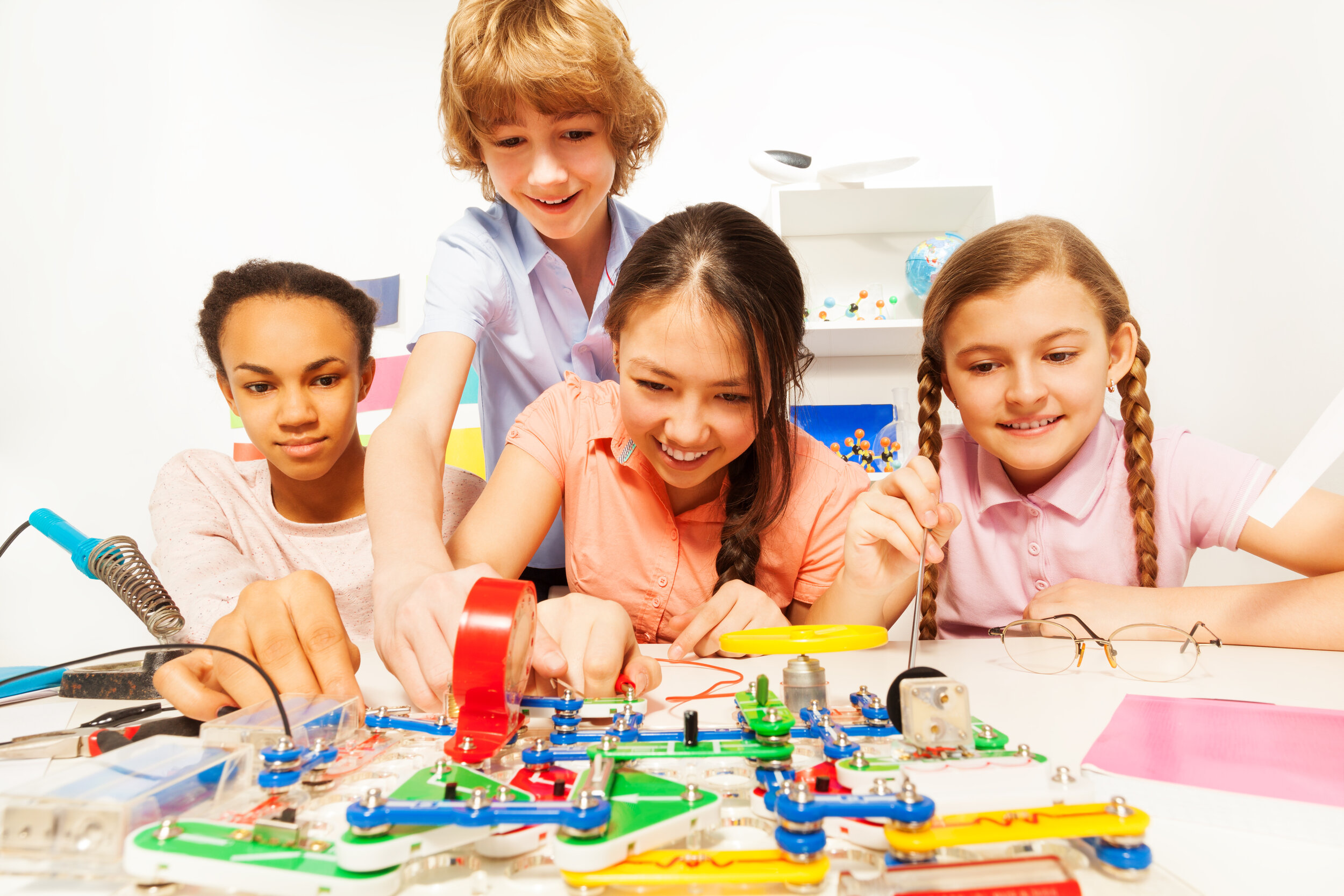
























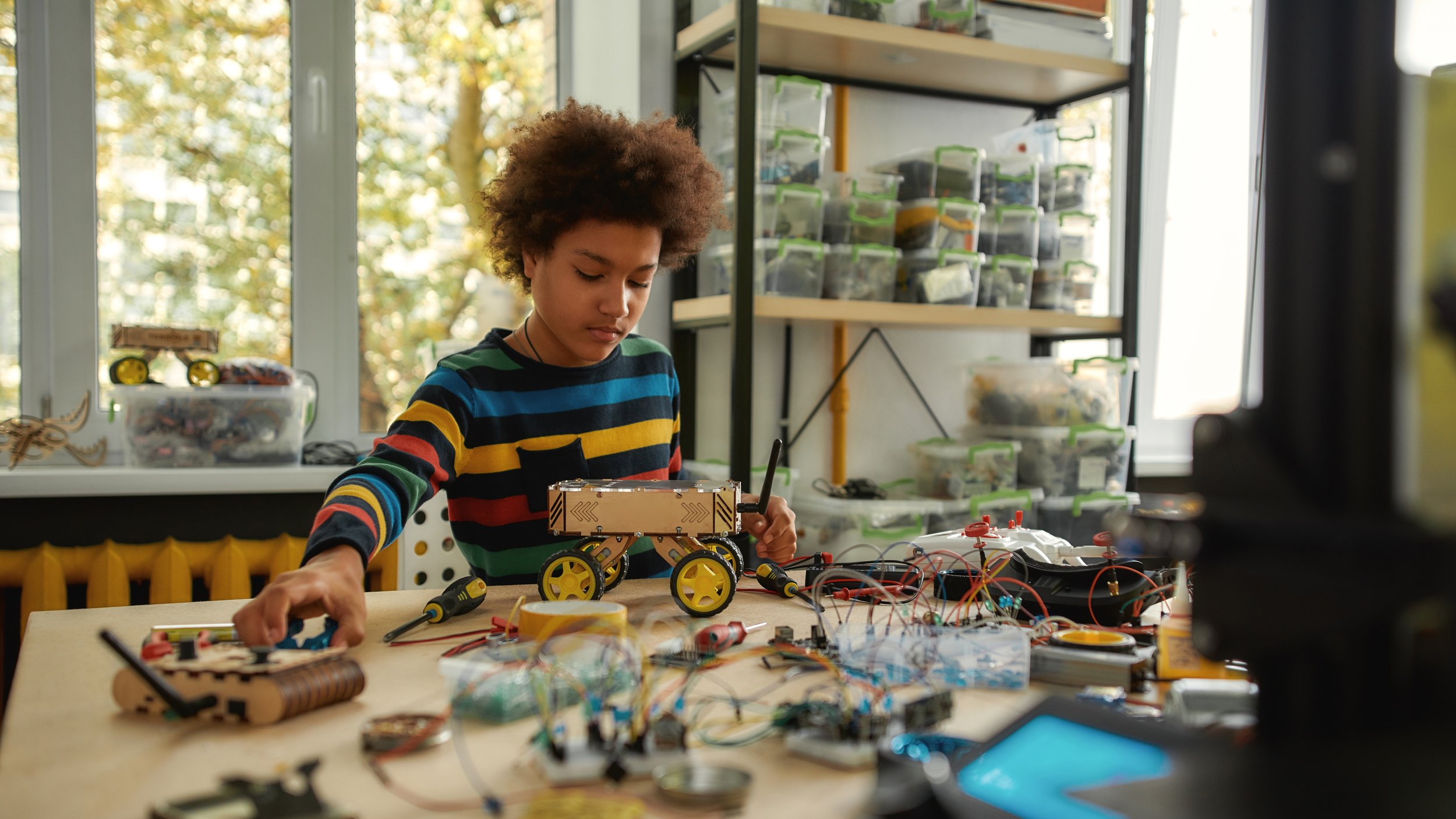

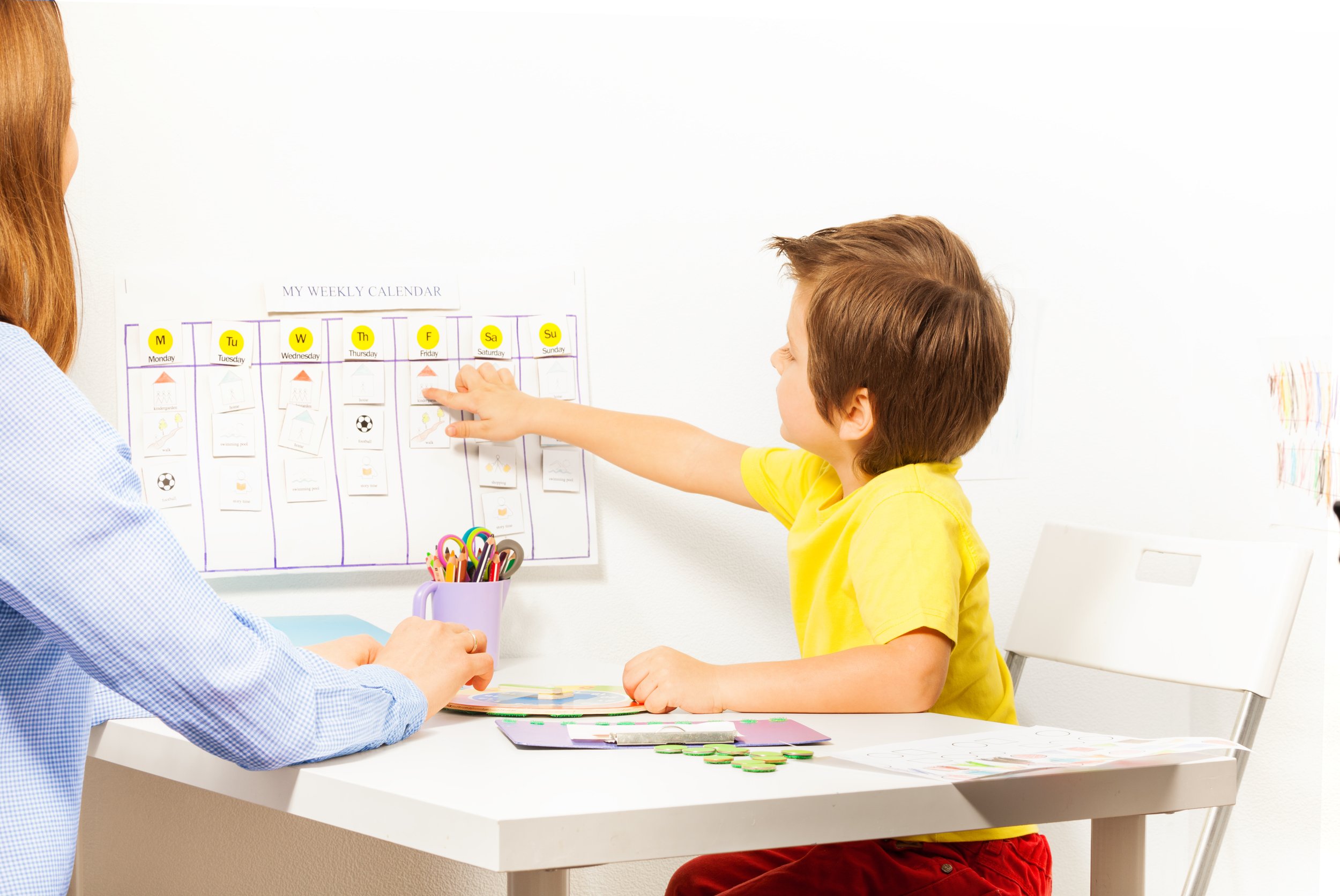



















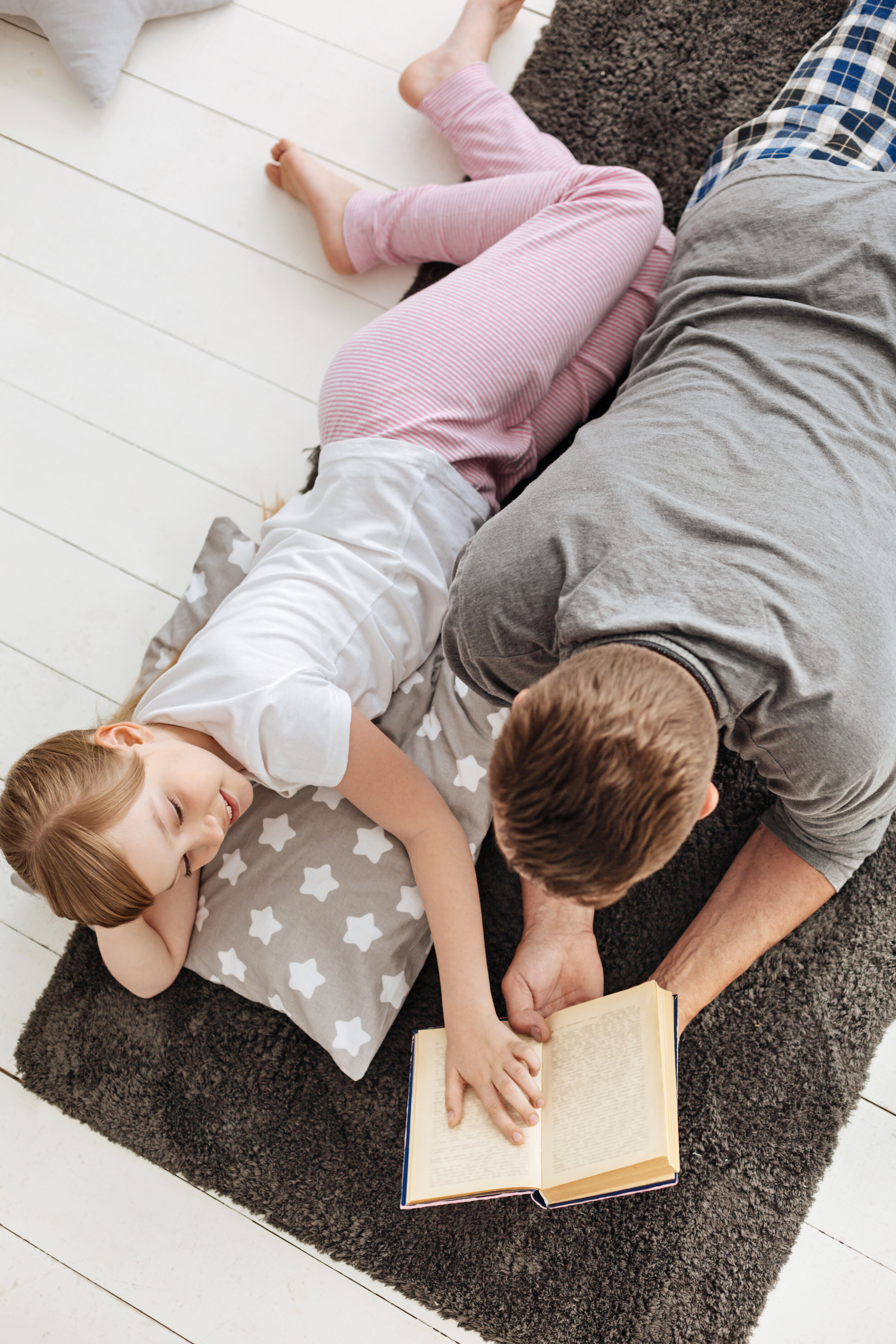













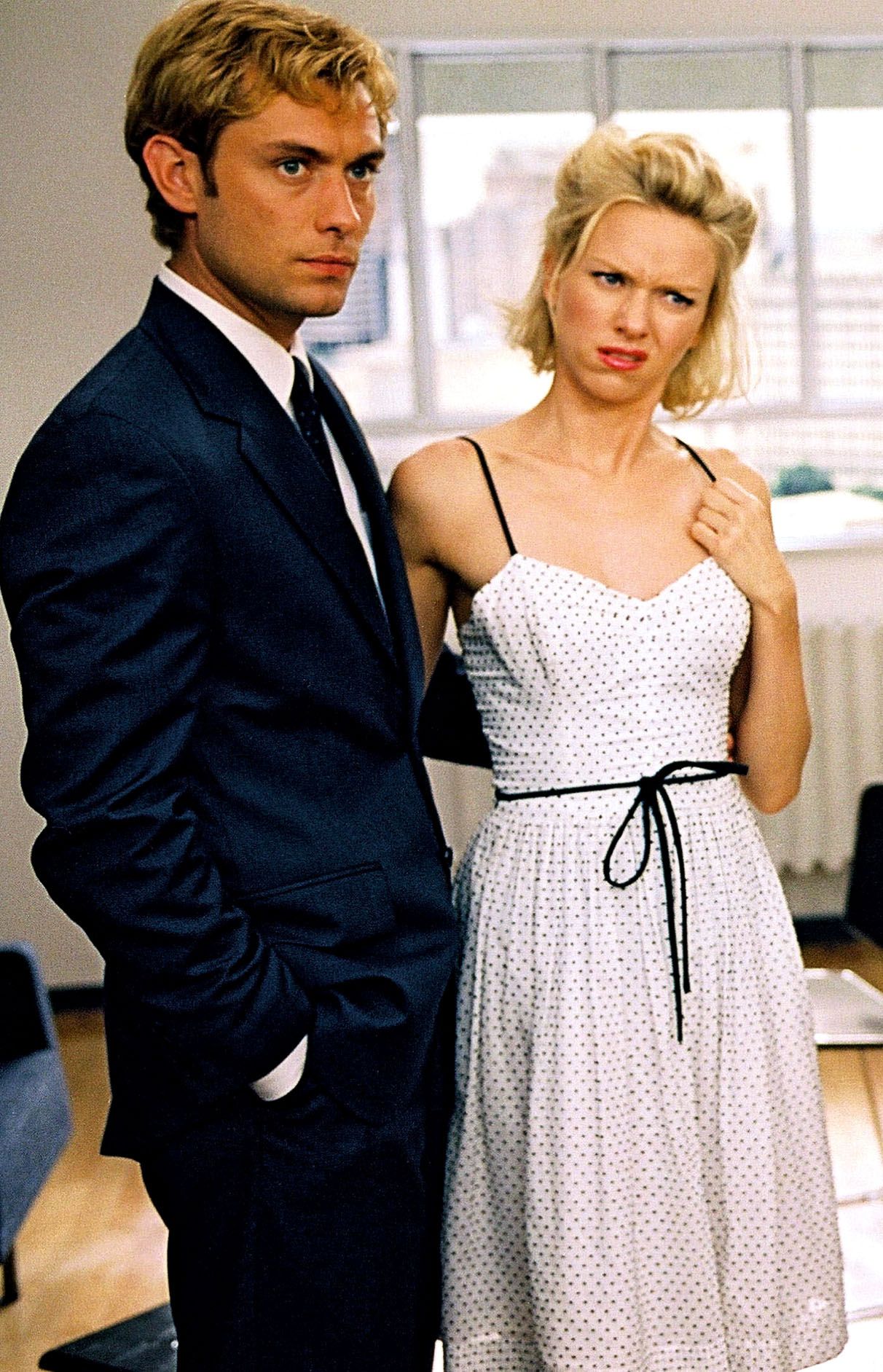





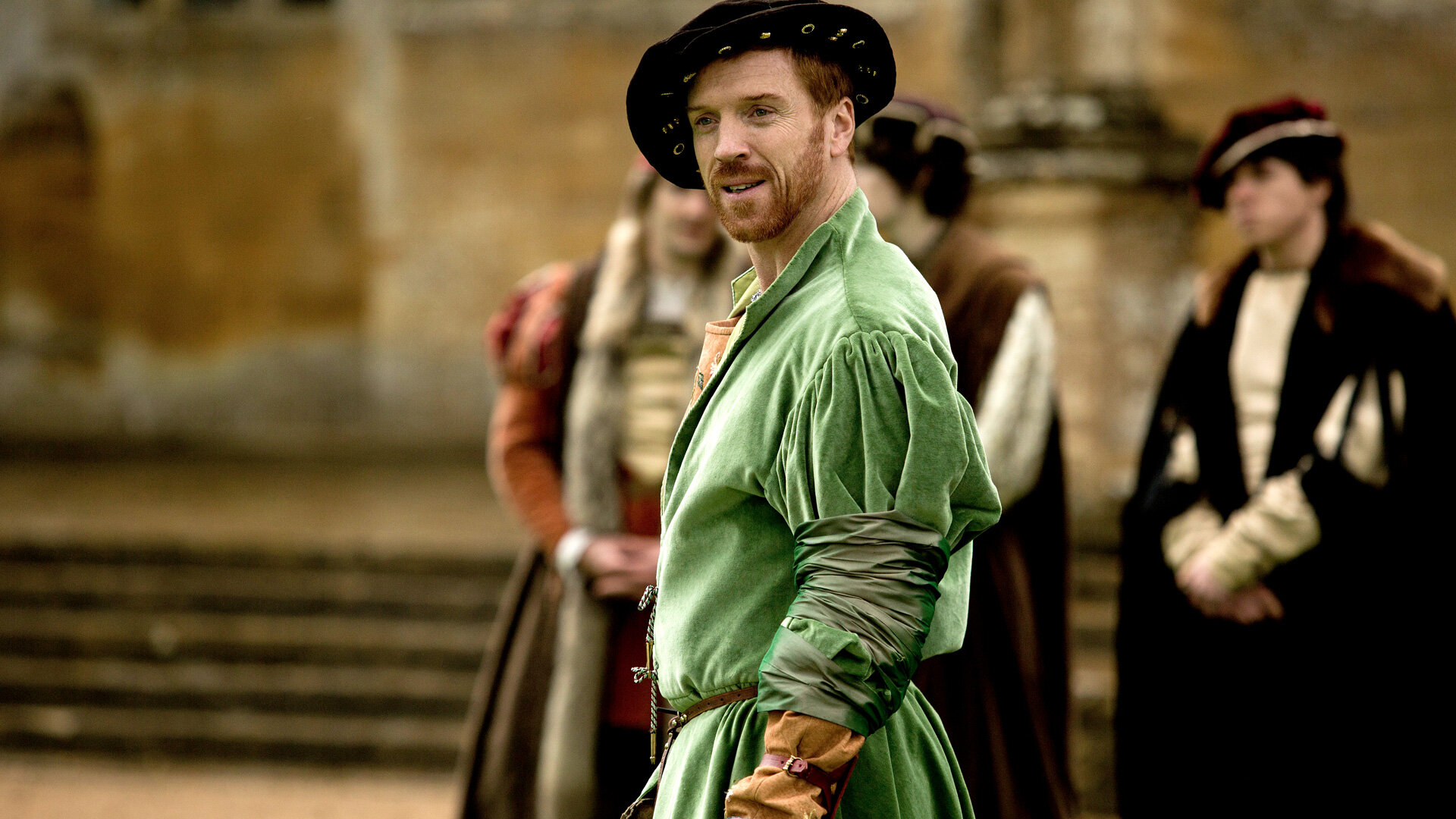





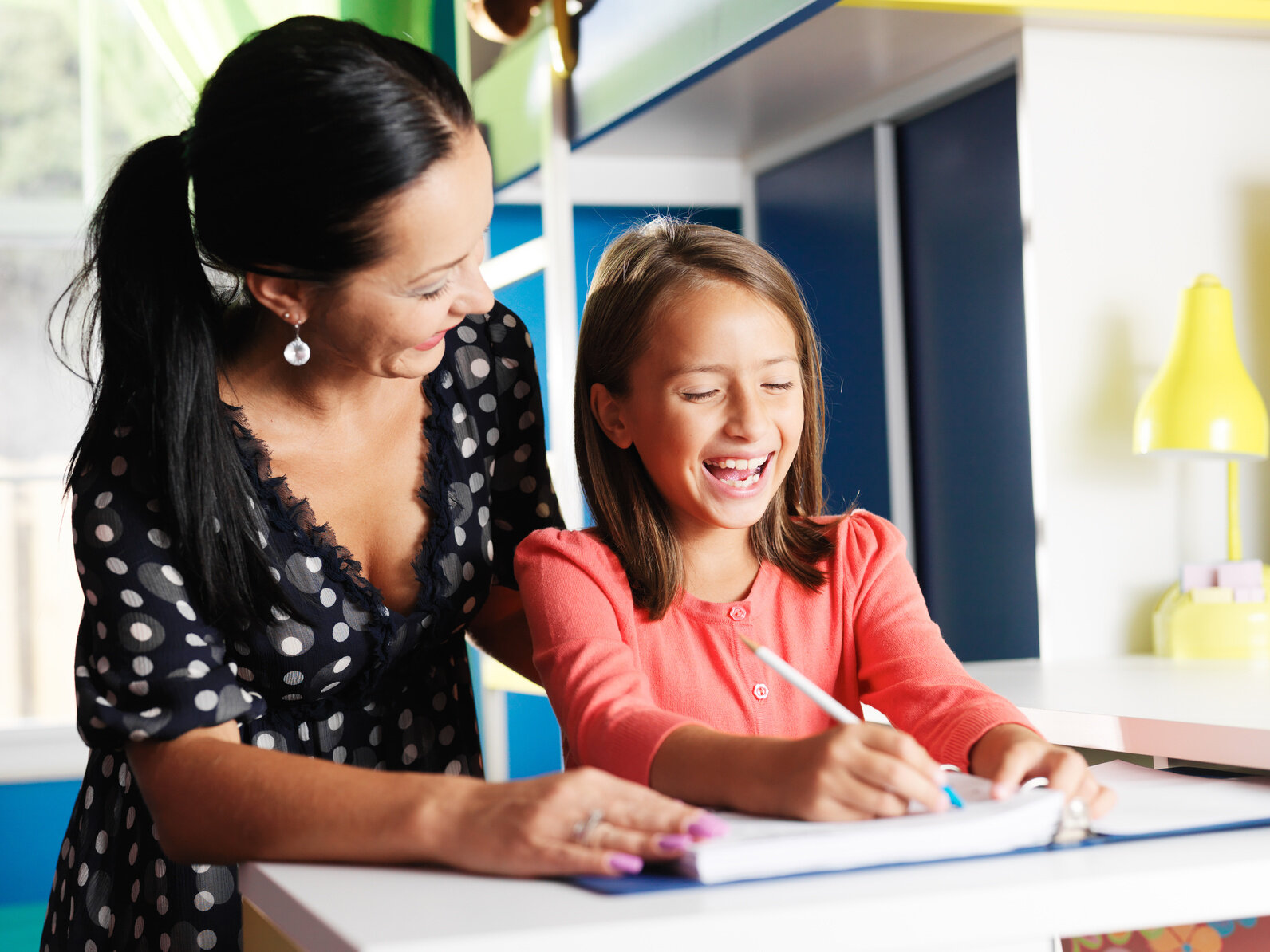
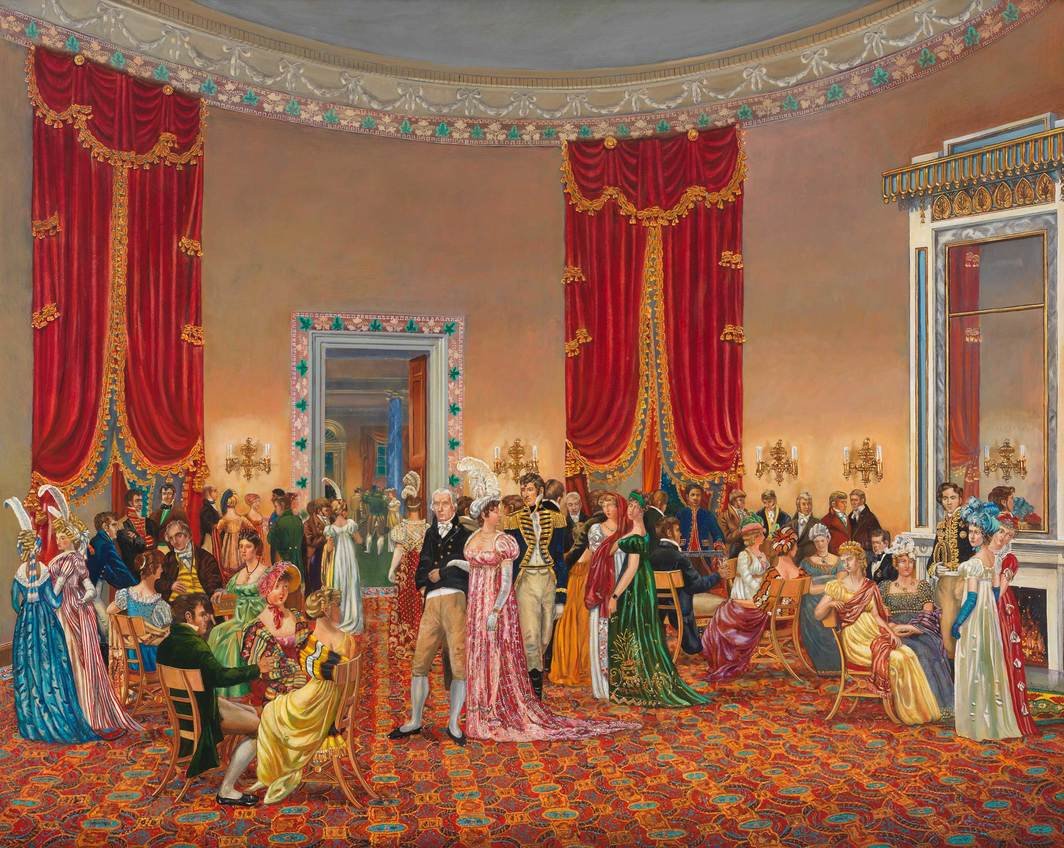










REBECCA PICKENS is home/school/life’s Curriculum Junkie in the magazine and online. She writes for several publications and also blogs at www.steampoweredclassroom.com.